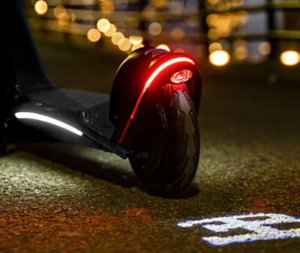The Rise of Electric Scooters with Seats: Enhancing Mobility and Convenience
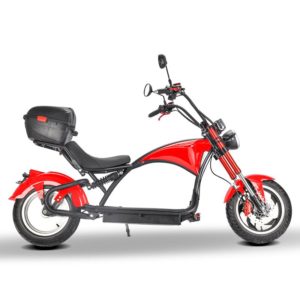
Discover the perfect balance of comfort and convenience with Electric Scooters with Seats. Enjoy a smooth ride and enhanced stability. #EcoFriendlyMobility While traditional electric scooters have gained traction, a new trend has emerged: the electric scooter with a seat. This innovation combines the agility and compactness of a scooter with the comfort and stability of a seated ride. In this article, we will explore the features, benefits, and impact of electric scooters with seats, highlighting their potential to revolutionize personal mobility.
The Rise of Electric Scooters With Seats
In recent years, there has been a surge in the popularity of electric scooters as a means of transportation, especially in urban areas. Electric scooters offer several advantages over traditional gasoline-powered scooters and cars, such as affordability, compactness, and eco-friendliness. They are powered by electric motors and rechargeable batteries, eliminating the need for fossil fuels and reducing carbon emissions.
The rise of electric scooters can be attributed to various factors. Firstly, the advancements in battery technology have led to the development of more efficient and lightweight batteries, allowing for longer riding ranges and quicker charging times. This has significantly improved the practicality and usability of electric scooters.
Secondly, the growing concern for environmental sustainability and the need for greener transportation alternatives have propelled the popularity of electric scooters. As cities strive to reduce air pollution and congestion, electric scooters have emerged as a viable solution for short-distance commuting and last-mile transportation.
Limitations of Traditional Electric Scooters
While traditional electric scooters have gained widespread acceptance, they do come with certain limitations. One of the primary limitations is the lack of seating options. Traditional electric scooters typically feature a standing platform, requiring the rider to remain in a standing position throughout the ride. This can be tiring, especially during long commutes or for individuals with mobility issues.
Additionally, the lack of seating can impact the stability and balance of the rider, especially at higher speeds or on uneven terrain. This can be a safety concern, particularly for novice riders or those who may have difficulty maintaining balance while standing
Introduction of Electric Scooters with Seats
To address the limitations of traditional electric scooters and provide a more comfortable riding experience, manufacturers have introduced electric scooters with seats. These scooters retain the compactness and agility of their standing counterparts while incorporating a seat for the rider.
Electric scooters with seats come in various designs, including a single seat, dual seats, or even a bench-style seat for multiple riders. The seats are usually padded and ergonomically designed to offer comfort and support during the ride.
The introduction of seats in electric scooters has expanded their user base by making them more accessible to a wider range of individuals. People who may have found standing for extended periods challenging, such as older adults or individuals with physical disabilities, can now enjoy the convenience and efficiency of electric scooters.
Furthermore, the addition of seats improves the stability and balance of the rider, enhancing safety during the ride. Riders can maintain better control over the scooter, especially during turns or on uneven surfaces.
Features and Components
Electric scooters with seats feature a frame design that accommodates the seating arrangement while maintaining the compactness and maneuverability of traditional electric scooters. The frames are typically constructed using lightweight materials such as aluminum or high-strength steel to ensure durability without compromising on weight.
The design of the frame focuses on stability and balance. The center of gravity is positioned low to enhance stability, and the frame is engineered to distribute the weight evenly, optimizing the scooter’s handling and performance. The frame may also incorporate suspension systems, such as front forks or rear shocks, to absorb shocks and vibrations, improving the overall comfort of the ride.
Seat Options and Adjustability
Electric scooters with seats offer various seating options to cater to different preferences and requirements. Single-seat designs are the most common, providing a comfortable and dedicated seating position for the rider. Dual-seat designs are also available, enabling two individuals to ride together.
The seats are typically padded and contoured to provide optimal comfort during the ride. Some seats may have adjustable features, allowing riders to customize the seat height and angle to suit their preferences. This adjustability ensures that riders of different heights and body types can find a comfortable riding position. Before you take a pillion passenger on your bike, make sure you know the licensing and legal requirements in your area.
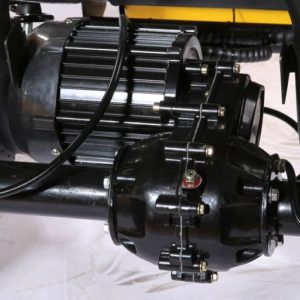
Electric Motor and Battery
Electric scooters with seats are equipped with electric motors that provide the necessary power for propulsion. The motor’s specifications may vary depending on the scooter model, but they are generally designed to offer a balance between performance and efficiency. The motors are often brushless to reduce maintenance needs and provide smoother acceleration.
The battery is a crucial component of electric scooters, storing the energy needed to power the motor. Lithium-ion batteries are commonly used due to their high energy density, lightweight nature, and longer lifespan. The battery capacity determines the riding range, with higher-capacity batteries enabling longer distances on a single charge.
Charging ports are usually located on the scooter for convenient recharging. Some electric scooters with seats may even offer removable batteries, allowing riders to swap out depleted batteries with fully charged ones for extended riding.
Control and Safety Features
Electric scooters with seats are equipped with various control and safety features to enhance the riding experience and ensure rider safety.
Handlebars: The handlebars provide steering control and are typically equipped with hand-operated controls, including the throttle for acceleration and brake levers for deceleration and stopping. Some scooters may also have additional buttons for controlling lights, horn, or other features.
Braking System: Electric scooters with seats employ reliable braking systems for efficient and safe stopping. Common types include disc brakes, which provide strong and responsive braking, and regenerative braking, which utilizes the motor to slow down the scooter while also recharging the battery.
Lights and Signals: To enhance visibility and ensure rider safety, electric scooters with seats are equipped with front and rear lights, as well as turn signals. These lights allow for better visibility in low-light conditions and indicate the rider’s intentions to other road users.
Stability and Balance: Electric scooters with seats often incorporate features to enhance stability and balance. This may include wider tires for improved traction, anti-slip footrests, and wider wheelbases to provide a stable platform.
Additional Features and Accessories
Manufacturers of electric scooters with seats often incorporate additional features and accessories to enhance the overall riding experience and convenience.
Storage Options: Some electric scooters have built-in storage compartments or baskets that allow riders to carry personal belongings or small items. This is particularly useful for daily commuting or running errands.
Digital Displays: Many electric scooters are equipped with digital displays that provide riders with essential information such as speed, battery level, distance traveled, and even GPS navigation.
Suspension Systems: Electric scooters with seats may feature advanced suspension systems, such as front and rear shocks, to absorb shocks and vibrations and provide a smoother and more comfortable ride, especially on uneven terrain.
Connectivity: Some electric scooters come equipped with Bluetooth or Wi-Fi connectivity, enabling riders to connect their smartphones or other devices for additional functionalities, such as tracking the scooter’s performance or using apps for navigation.
Accessories: Riders can customize their electric scooters with seats with various accessories, including phone holders, cup holders, mirrors, or even detachable storage bags, further enhancing convenience and personalization.
By incorporating these features and accessories, electric scooters with seats aim to provide a comprehensive and enjoyable riding experience, meeting the needs of riders in terms of comfort, convenience, and safety.
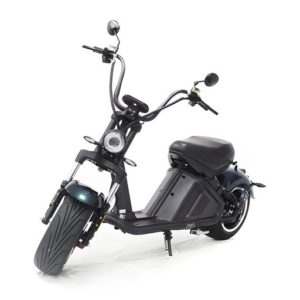
Practical Applications
Urban Commuting: One practical application of artificial intelligence (AI) in urban commuting is the optimization of traffic flow and congestion management. AI algorithms can analyze real-time traffic data from various sources such as sensors, GPS devices, and traffic cameras to identify patterns and make predictions. This information can be used to optimize traffic signal timings, reroute vehicles, and suggest alternative transportation modes to reduce congestion and improve commuting times.
Additionally, AI-powered ride-sharing platforms have transformed urban commuting. These platforms use AI algorithms to match riders with drivers efficiently, considering factors such as location, destination, and driver availability. This not only reduces individual car usage but also enables more efficient use of existing transportation infrastructure.
Campus and Neighborhood Travel: AI can be applied to optimize transportation within campuses and neighborhoods. For example, autonomous shuttles or robots equipped with AI can be deployed to transport students or residents within a campus or neighborhood. These vehicles can navigate through predefined routes, avoiding obstacles and adapting to real-time traffic conditions.
Furthermore, AI can assist in providing real-time information on shuttle schedules, parking availability, and transportation options within a campus or neighborhood. This information can be accessible through mobile applications or smart kiosks, allowing users to plan their journeys more efficiently.
Tourism and Sightseeing: AI can enhance the tourism and sightseeing experience in various ways. Natural language processing (NLP) algorithms can be employed to develop AI-powered virtual tour guides or chatbots. These guides can provide visitors with information about historical landmarks, cultural sites, and popular attractions, answering their questions and offering personalized recommendations based on their preferences.
Computer vision algorithms can also be utilized to enhance augmented reality (AR) experiences for tourists. By analyzing the camera feed from a smartphone or AR glasses, AI can overlay relevant information, historical context, or interactive elements onto the user’s view, enriching their exploration of a destination.
Delivery Services: AI has revolutionized the delivery services industry. Delivery companies are leveraging AI algorithms to optimize delivery routes, predict delivery times accurately, and allocate resources efficiently. By considering factors like traffic conditions, delivery volume, and customer preferences, AI can suggest the most efficient routes and enable companies to provide reliable and timely deliveries.
Moreover, autonomous delivery vehicles are being developed and deployed in certain areas. These vehicles, equipped with AI, can navigate through streets, avoid obstacles, and deliver packages to customers’ doorsteps autonomously. AI algorithms also play a crucial role in coordinating the operations of a fleet of autonomous vehicles, ensuring seamless delivery processes.
Senior Mobility Solutions: AI-based solutions are increasingly being developed to address the mobility challenges faced by seniors. Intelligent transportation systems can assist in improving the accessibility and safety of transportation options for older adults. AI algorithms can analyze data from various sources, including sensors and smart devices, to identify potential hazards or risks and provide real-time alerts or assistance.
Moreover, AI-powered virtual assistants can help seniors with trip planning, providing information about public transportation options, accessible routes, and schedules. These assistants can also integrate with wearable devices or smart home systems to monitor seniors’ health conditions during their journeys, ensuring their well-being.
Artificial intelligence is finding practical applications in various aspects of transportation and mobility. From optimizing traffic flow and enabling efficient urban commuting to enhancing tourism experiences and addressing specific mobility needs, AI is revolutionizing how we move and navigate our surroundings. With further advancements and integration with emerging technologies, AI will continue to play a significant role in shaping the future of transportation.
Market Growth and Demand
The market for artificial intelligence (AI) in transportation and mobility is experiencing significant growth and is expected to continue expanding in the coming years. Factors driving this growth include the increasing need for efficient transportation solutions, rising urbanization, and advancements in AI technology.
The demand for AI in transportation is fueled by the need for optimizing traffic flow, reducing congestion, and improving commuting times in urban areas. Additionally, the rise of ride-sharing platforms, autonomous vehicles, and delivery services has further increased the demand for AI solutions in transportation and mobility.
The market is also driven by the growing adoption of AI-powered virtual assistants and chatbots in the tourism and travel industry. These AI systems provide personalized recommendations, enhance the sightseeing experience, and cater to the preferences of tourists. autonomous vehicle technology, and transportation companies are collaborating with AI startups to enhance their services and improve operational efficiency.
Competitive Landscape
The competitive landscape in the AI transportation and mobility market is characterized by the presence of both established technology companies and startups. Major players include technology giants such as Google (Waymo), Uber, Tesla, and Amazon, as well as traditional automakers and transportation companies that are investing in AI technologies.
Startups are also making significant contributions to the market, focusing on areas such as autonomous vehicle technology, smart mobility solutions, and AI-powered analytics platforms. These startups often bring innovative approaches and niche expertise, challenging established players and driving further competition.
Partnerships and collaborations between different companies are also common in this market. Automakers are partnering with tech companies to develop autonomous vehicle technology, and transportation companies are collaborating with AI startups to enhance their services and improve operational efficiency.
Technological Advancements
Technological advancements in AI are key drivers of the market growth. Machine learning algorithms, deep learning techniques, and computer vision systems are continually evolving, enabling more sophisticated applications in transportation and mobility.
Advancements in sensor technologies, such as LiDAR and radar, have improved the perception capabilities of autonomous vehicles, enhancing their ability to navigate complex environments and ensure passenger and pedestrian safety.
Furthermore, the development of edge computing and the deployment of 5G networks have facilitated real-time data processing and communication, enabling faster and more efficient AI-powered transportation systems.
Regulatory Considerations
As AI technologies become more prevalent in transportation and mobility, regulatory considerations play a crucial role in shaping the market. Governments and regulatory bodies are addressing concerns related to safety, privacy, and ethical use of AI in transportation.
Regulations for autonomous vehicles are being developed to ensure the safe deployment and operation of self-driving cars on public roads. Governments are also working on data protection and privacy regulations to safeguard the personal information collected by AI systems in transportation.
Moreover, ethical considerations such as bias and transparency are being addressed to ensure that AI systems in transportation and mobility are fair, accountable, and transparent in their decision-making processes.
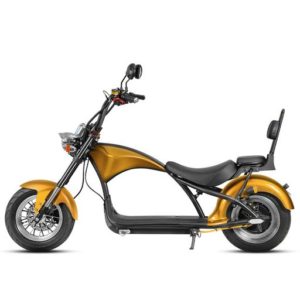
Future Trends and Innovations
The future of AI in transportation and mobility holds several exciting trends and innovations. Some key areas to watch for include:
- Increased adoption of autonomous vehicles: Autonomous vehicles are expected to become more widespread, revolutionizing the transportation industry. The deployment of self-driving cars and trucks is anticipated to reduce accidents, improve traffic flow, and enhance overall transportation efficiency.
- Integration of AI with Internet of Things (IoT): AI algorithms will be integrated with IoT devices to create smarter transportation systems. This integration will enable real-time monitoring of traffic conditions, infrastructure maintenance, and predictive maintenance of vehicles, leading to more efficient and sustainable transportation networks.
- Enhanced multimodal transportation solutions: AI will play a crucial role in developing integrated multimodal transportation solutions. AI algorithms will optimize the combination of different transportation modes such as public transit, ride-sharing, and micro-mobility options to provide seamless and personalized journeys.
- Advancements in natural language processing: Natural language processing will continue to improve, enabling more sophisticated AI-powered virtual assistants and chatbots. These assistants will provide real-time information, personalized recommendations, and interactive experiences, enhancing the overall travel and tourism experience.
- Sustainability and environmental considerations: AI will contribute to the development of greener and more sustainable transportation solutions. By optimizing routes, managing energy consumption, and promoting shared mobility, AI can help reduce carbon emissions and mitigate the environmental impact of transportation.
As personal transportation undergoes a rapid transformation, electric scooters with seats have emerged as a practical and versatile solution. By combining the best aspects of traditional scooters and comfortable seating, these innovative vehicles offer an enhanced riding experience, improved stability, and extended range. Moreover, they contribute to reducing carbon emissions and alleviating traffic congestion in urban areas. With the growing demand for eco-friendly transportation options, electric scooters with seats are poised to play a pivotal role in shaping the future of personal mobility. As technology advances and regulatory frameworks adapt to these evolving trends, we can expect to see further refinements and innovations in this exciting field. The era of electric scooters with seats has arrived, promising a greener, more efficient, and more comfortable way to navigate our cities.
WARNING:
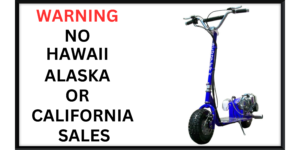
Before you go Enter the Draw for the Bugatti Electric Scooter Draw Here:
Ebikes Worth Mentioning Click Here
Back to Top
To use our purchasing process you must be 18 years of age or older to purchase any product on our website and not represent or purchase on behalf of anyone under this age as set at the point of purchase. The scooter will be registered on our database to the Name and Address etc of the purchaser.
This post or page may contain affiliate links that may earn a small commission at no additional cost to you. I use affiliate links because they allow me to share useful products and services with you that are related to the topic of my website. Affiliate links also help me earn some income from my website, which enables me to keep creating high-quality content for you. I appreciate your support and trust!
- Health Benefits of Electric Bikes
- What to Look for When Buying an E-bike
- Best Electric eBikes for Your Little One
- How to Safely Unlock the Top Speed on Unagi Electric Scooters
- Breaking: The Shocking Truth About E Scooter Laws in WA!
- Can You Ride Scooters On The Road “California”
- Can Electric Scooters Get Wet? Yes!
- How do I transport my electric scooter in a car?
- Top 6 Long Range Electric Scooters
- Two-Stroke or Four-Stroke? Gas Scooter Showdown
